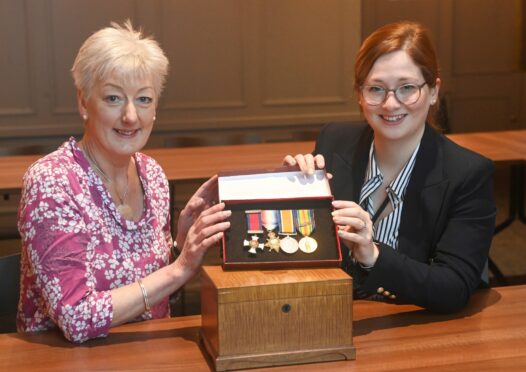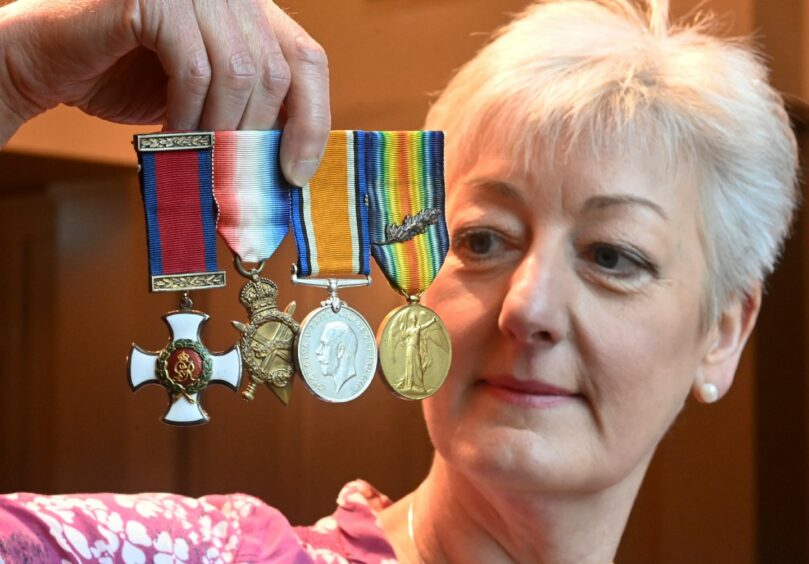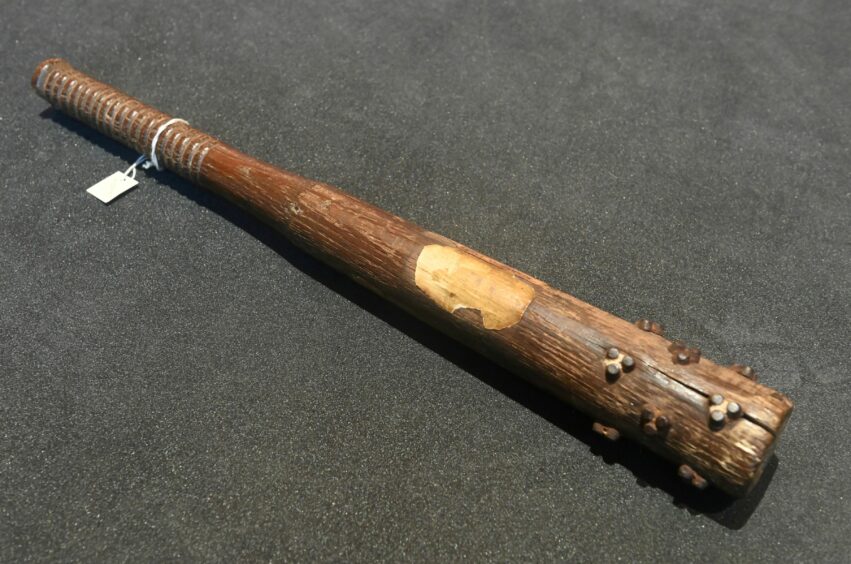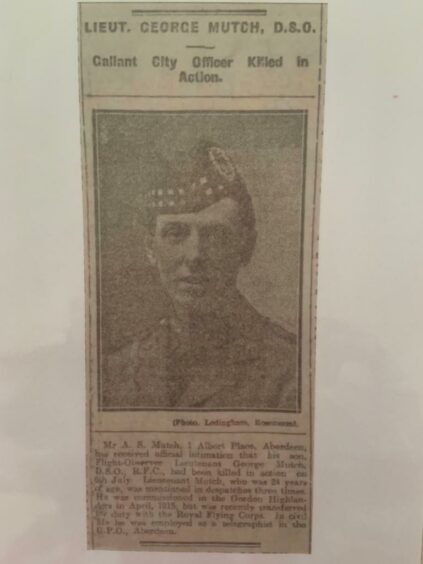Lieutenant George Mutch of Albert Place, Aberdeen, was only able to wear the Distinguished Service Order that had been pinned on his chest by King George V for three months before his plane was shot down over France.
But 105 years later, and after a considerable period when it was lost to his family, that medal is now back in his home city to stay.
The Gordon Highlanders Museum will use the DSO, alongside his three other medals, to tell the extraordinary story that led to the ceremony at Buckingham Palace in 1917 – and what came afterwards.
All four awards – as well as a Gordon Highlanders cap badge – were donated by Gill Brisley, Lieutenant Mutch’s great-niece, who bought them for £5,500 from a collector who had scooped them at an auction last year.
They were handed over on Saturday afternoon in the museum’s Regimental Gallery room, with many distinguished figures from the regiment’s past looking on from their wall-mounted portraits.
After signing forms to make the donation official, Mrs Brisley was given a gift of a glengarry hat, similar to the one her great-uncle had in his pocket when he was killed.
Home-grown ‘have-a-go hero’
George Mutch was born in 1892, and grew up with his parents Alexander and Jessie at the family’s Albert Place home.
Originally a reservist, he joined up on a full-time basis in 1912, and letters from around that time demonstrate his frustration at his application not being processed quickly enough.
He made clear his intention to join a kilted regiment: “It had to be a kilted regiment,” said Mrs Brisley.
After the outbreak of the First World War, he was commissioned Second Lieutenant in the Gordon Highlanders – and later promoted to Lieutenant during the devastating Battle of the Somme in 1916.
On January 29 1917, he and his men put on white smocks and white helmets to disguise themselves against the snow on No Man’s Land, and charged towards the German machine guns.
The enemy suffered more than 50 casualties, with 17 taken prisoner and a number of gun emplacements being destroyed. Two officers and four men on the British side were killed.
A brutal wooden club with metal nubs, used by Lieutenant Mutch during the raid, was already in the collection of the Gordon Highlanders Museum.
For his gallantry in leading ‘B’ Company during the extraordinary raid, he was awarded the DSO and was described as a “magnificent example to his men”.
The honour, which is below only the Victoria Cross, was not normally given to soldiers of his rank.
But never one to stay still for long, Lieutenant Mutch transferred over to the Royal Flying Corps not long after the medal ceremony at the palace.
He was 24 years old was killed when German ace Kurt Wolff – a protege of Manfred Von Richthofen, the Red Baron – shot his aircraft down on July 6 1917.
He is buried at the Railway Dugouts Burial Ground (Transport Farm) just outside of Ypres in Belgium.
Ruth Cox, curator at the Gordon Highlanders Museum, said the medals would open up “a whole new chapter to his story that we can tell and share with our visitors”.
She said: “If anything, he typifies and exemplifies who the Gordon Highlanders were: proud of their Aberdonian and Scottish heritage.
“Hearing that Lieutenant Mutch had his officer’s cap and badge in his pocket when sadly his plane was shot down shows the connection and affection that he held for his regiment, even after being posted to the Royal Flying Corps.
“It was clearly a very important thing to him.”
Mrs Brisley, who was born in Kirkcaldy but now lives on the outskirts of London, said she knew the museum was the right home for the objects, because of how clearly proud her great-uncle was of being from Scotland and Aberdeen.
She said: “I feel quite emotional about it, because I feel it’s an interesting story regardless of it being my family.
“I think these stories are important for future generations to remember what people sacrificed.
“If I can play a very, very, very small part in keeping that story alive then I’m happy to do it.”



